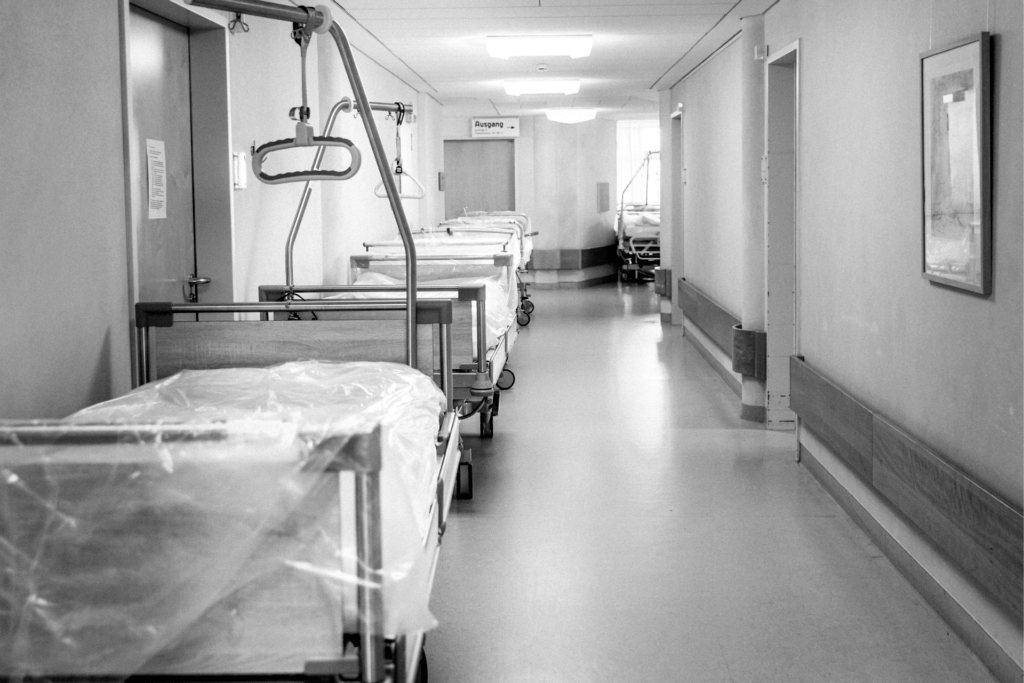Hospital-acquired infections (HAIs) or nosocomial infections are diseases acquired in healthcare facilities and hospitals or diseases that manifest 48 hours or more after admission or within 30 days of discharge (National Library of Medicine).
Over a million HAIs occur across the U.S. healthcare system annually, leading to the loss of thousands of lives and adding billions of dollars to healthcare costs. Some prevalent HAIs are bloodstream infections, pneumonia, urinary tract infections, and surgical site infections, affecting one out of every 31 hospital patients at any time (Agency of Healthcare and Research Quality).
Declining rates of HAIs prior to COVID-19 across U.S.
A consistent decrease in HAIs was observed between 2018 and 2019, like the previous years across U.S. hospitals.
But the tireless efforts of Infection Prevention and Control (IPC) programs to eliminate this threat went in vain with the advent of COVID-19.
How COVID-19 altered the HAIs landscape
When the pandemic started, we did not know much about how COVID-19 hospitalizations would affect the rate of HAIs. As the pandemic swept through the U.S., cases peaked in 2020. This placed a burden on acute-care hospitals, leading to altered staffing practices, increased critical care capacity, and modified use of PPE kits.
A U.S. Centers for Disease Control and Prevention study has shown that several types of HAIs surged after the pandemic reached U.S. shores in 2020. Patients suffered potentially deadly infections related to ventilators, tubes, other medical devices, etc., compared to the same period in 2019.
Therefore, hospitals need resilient and effective (IPC) programs to keep patients, visitors, and healthcare workers safe to combat emerging threats of HAI.
4 approaches to prevent HAIs
Advances in material science and the proven principle of UV-C based disinfection offer options to combat the HAIs challenge healthcare units face globally.
1. Antibacterial coating
Antibacterial coating with montmorillonite (MMT), chlorhexidine acetate (CHA) and Poly(protocatechuic acid-polyethylene glycol 1000-bis(phenylboronic acid carbamoyl) cystamine) (PPPB) is highly effective in avoiding device-associated infections. Nevertheless, bacterial drug resistance caused by the uncontrolled release of antibiotics limits the clinical efficacy of antibacterial coating.
2. Multi-Stimulus Responsive Multilayer Coating
A multi-stimulus responsive multilayer antibacterial coating was prepared through layer-by-layer self-assembly of certain chemicals. It can be applied over various substrates such as polyvinyl chloride membrane, cellulose acetate membrane, polyacrylonitrile membrane, and polyurethane membrane, imparting a versatile coating. Under the stimulation of acids, glucose, or dithiothreitol, this coating can kill more than 99% of Staphylococcus aureus and E. Coli within four hours.
3. Coating of fabrics
In this process, fabrics are soaked in a bacteria-killing polymer solution containing a molecule that releases sterilizing forms of oxygen when light falls on it. U.V. light is then used to turn this solution to solid, fixing the coating to the fabric.
4. UV-C disinfection robots
UV-C disinfection robots were developed (first by Singapore-based robotics manufacturer Otsaw, and later by others) to supplement standard disinfection and cleaning procedures. These fully autonomous mobile robots use UV-C light to kill bacteria and viruses.
Measuring the progress and efficacy of all the preventive measures implemented is crucial to eliminate HAIs. Below we discuss the role and the initiatives of NHSN towards this direction.
NHSN: The U.S. most widely used HAI tracking system.
CDC’s National Healthcare Safety Network (NHSN) is the most extensively used HAI tracking system in the U.S. NHSN offers facilities and data needed to detect problem areas, measure the development of prevention efforts, and eradicate HAIs.
Furthermore, NHSN helps healthcare facilities track antimicrobial use and resistance, blood safety errors, and other significant healthcare processes.
Key players operating in the HAIs prevention space
Some key players in the HAIs treatment market are AstraZeneca, Cipla, Johnson & Johnson, Daiichi Sankyo, Merck, Bayer, Eli Lilly among others. These companies are constantly adopting strategies, like M&As, collaborations and are actively involved in drug development to cater to the growing needs of the market.
For example, in 2019, Cipla purchased Elores, a patented anti-infective product, for the Indian market from Venus Remedies Limited to strengthen its fight against AMR (Antimicrobial Resistance).
Another example is Merck’s FDA approval of its antibiotic Zerbaxa in 2019 for the treatment of patients older than 18 years with HAIs and ventilator-associated bacterial pneumonia.
Measures adopted by hospitals and future suggestions to eliminate HAIs
To decrease the rate of HAIs, many hospitals have established infection surveillance and tracking systems along with other strategies.
The effect of HAIs is not just seen at an individual patient level but also at the community level as they have been related to multidrug-resistant infections. Therefore, identifying patients with risk factors for HAIs and multidrug-resistant infections is of utmost importance in preventing and minimizing these infections. Additionally, healthcare facilities must look at and rethink the lessons learned through the pandemic to build and maintain high-performing and resilient IPC programs.
Do you want to stay updated around innovative approaches to healthcare challenges?
Contact us and gain best-in-class market insights. Learn how we help you make informed decisions.
#HAIs #nosocomialinfections #hospitalacquiredinfections #hospitalinfections #healthcareassociatedinfections
Sources:
Hospital Acquired Infections – PubMed (nih.gov)
UVD Robots Joins Ecolab to Fight Hospital Acquired Infections (blue-ocean-robotics.com)
Healthcare-Associated Infections (HAIs) | Agency for Healthcare Research and Quality (ahrq.gov)
